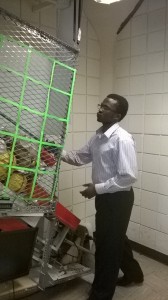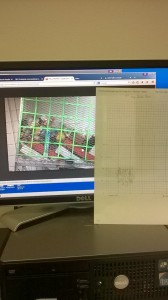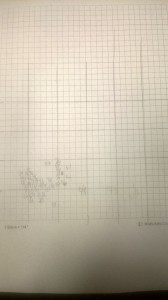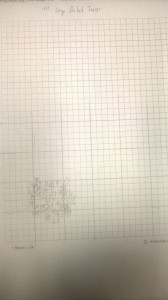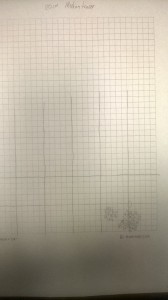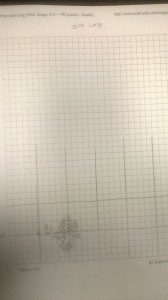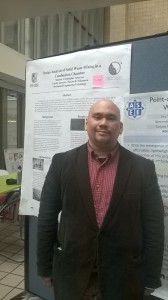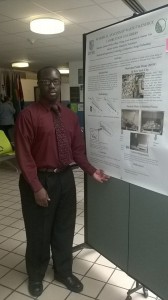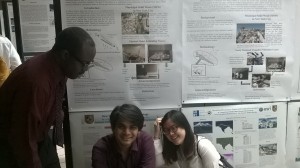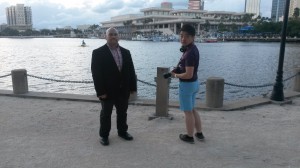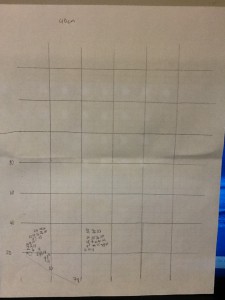http://energy.gov/sites/prod/files/2015/05/f22/EERE%20Resources%20-%20Undergrad%204.30.15.pdf
Monthly Archives: May 2015
5-15-15
Weekly update (05/11/2015)
Energy and Environmental Simulation Laboratory (EESL) has been selected as a partner of CUNY service corps. EESL will accept maximum 5 students from CUNY colleges in 2015-16. Total $34K will be paid for the selected students who engage EESL’s faculty-led service project as an internship.
5-8-15
While Tiffany, Lynne, and Luca are in Florida for the competition where they are racing their tricyle they made at the Mechatronics lab, We are mapping the trajectory of the Large and Medium sized particle tracers in 20 cm and 40 cm of MSW. Above were the results of the mapping of the Large and Medium particles. The mapping of the smaller particle tracers were done previously.
Wednesday and Thursday this week was the poster presentations for the Research, Emerginging, and Honors scholars as well as LSAMP award winners in the basement and first floor of NAMM. Seven students from EESL were there to present.
Weekly update 05/05/2014
Weekly update 05/05/2015
We successfully finished a presentation in the NAWTEC conference.
NAWTEC Conference
Last week, Professor, Ye Lynn and myself went to Tampa Florida for the NAWTEC conference hosted by the Solid Waste Association of North America (SWANA). We watched many presentations and viewed many of the vendor booths at the conference.
Lynn and I watched Professor present for the first time. His presentation was titled, “Semi-Fluidized Combustion System for Municipal Solid Waste.” Professor focused on explaining the mixing phenomena and size segregation of MSW, explaining his design of a new combustion chamber as well as the discussion of grate system development. Professor also included Lynn’s Solidworks animation of the reverse acting grate as well as Tiffany’s video of the reverse acting grate in action. He also including the video introducing the new reverse acting grate which was shown in previous posts on here.
We also got to see Professor Nakamura’s mentors present as well: Nickolas Themelis from Columbia and Marco Castaldi from City College. Professor Themelis presented on modern problems facing Waste Management. He stated that the two main problems were public acceptance and affordable capital cost. It was noted that most developed countries are generally opposed to waste management and approximately 0.2-0.4% GDP is spent on MSW management.
Professor Castaldi was part of a panel discussion regarding the future of Integrated Industrial Parks as part of a Circular Economy. He emphasized the importance of researching past case studies recorded in university publications as well as asking input from current college students regardless of their familiarity in the matter.
5-4-15
Although we spent a majority of the past year and some change on the construction of the three combustion chamber bed models, the more important aspect of the research is the empirical data we obtain from the apparatus. Although it can be perceived as boring, tedious and cumbersome, this is the main purpose of EESL.
Above are representations of the movement of the small spherical tracer when 20 cm of MSW and 40 cm of MSW are applied to the reverse acting grate bed. It was cumbersome to observe as the bed is not merely a 2D representation; the small tracer has many problems including having its view obstructed by larger pieces of garbage as well as being stuck inside the many coffee cups that are inside the combustion chamber bed.
The information was provided by Tiffany’s recording of the movement of the small, medium, and large spherical tracers. For this particular chart, I only focused on the small particle. Each number represents the location of the small spherical particle tracer after one reciprocation of the reverse acting grate. Each time the reciprocating grates returned to the “zero” position, it would set off a counter at the bottom of the reverse acting grate bed to indicate how many times it moved.
This information will at a future date be processed using MatLAB to create a probability equation to map out the mean movement of MSW particles as well as creating a corresponding 2D and 3D animated graph.

